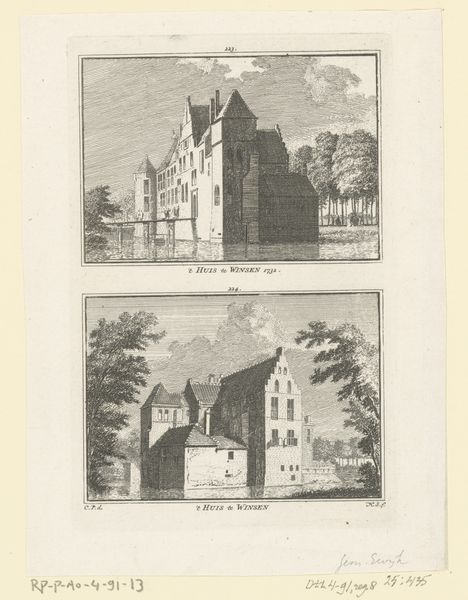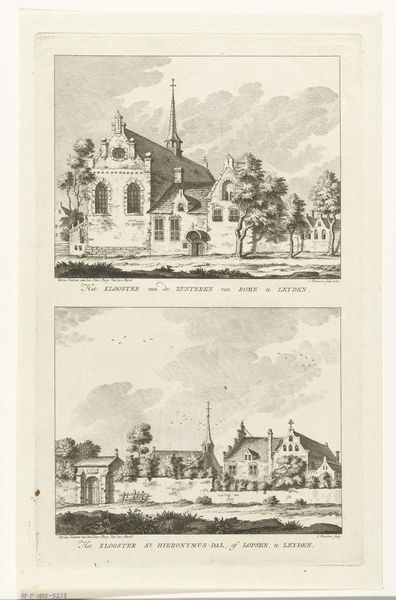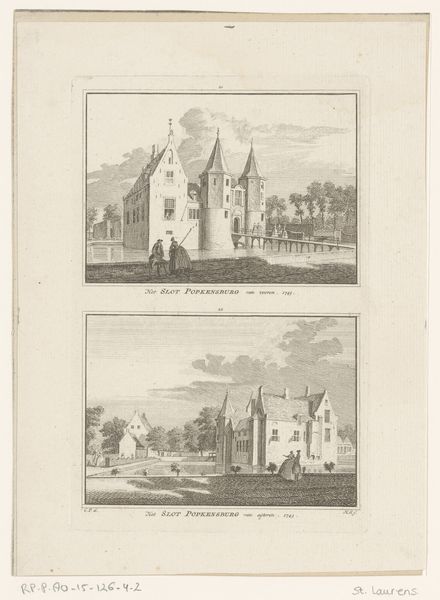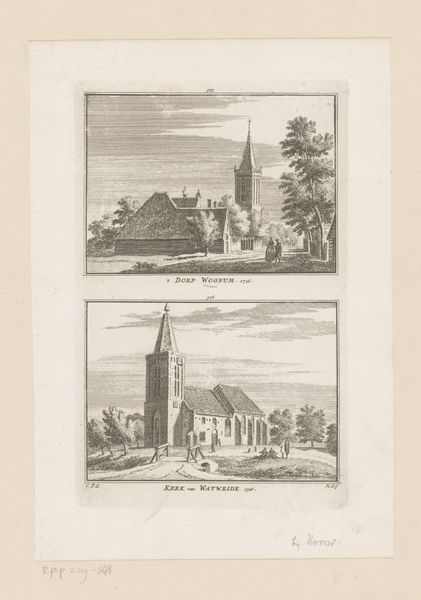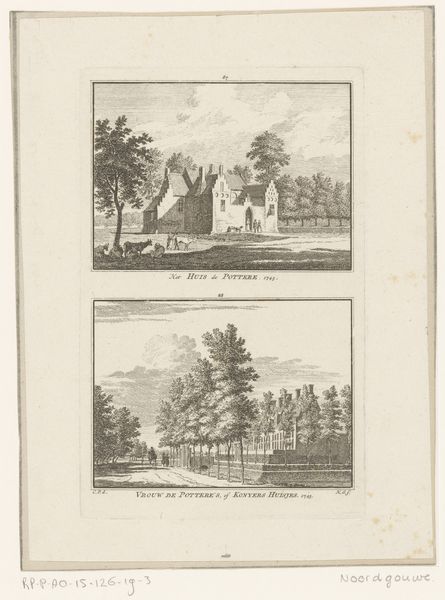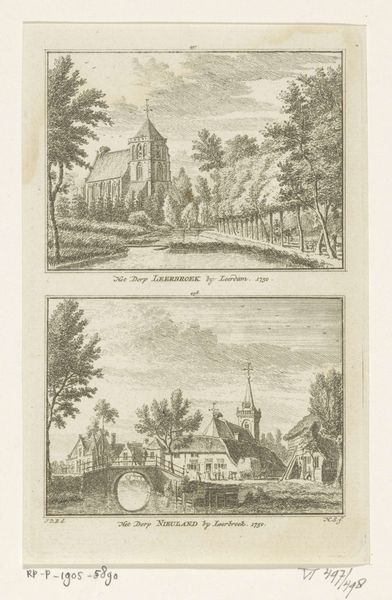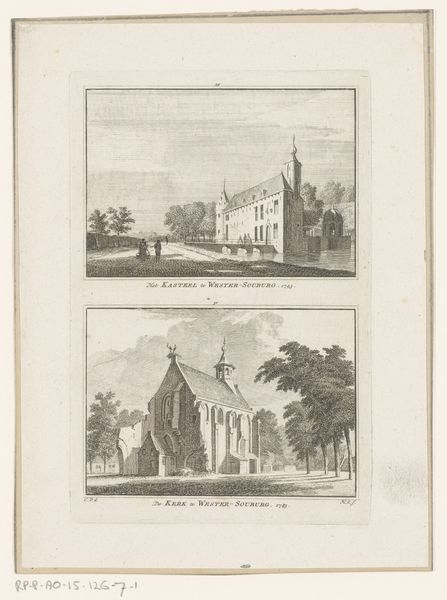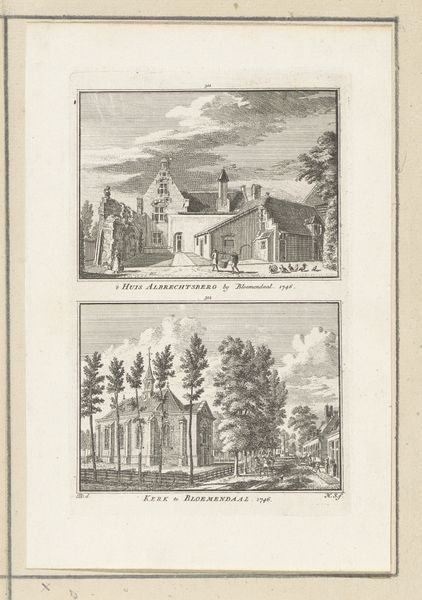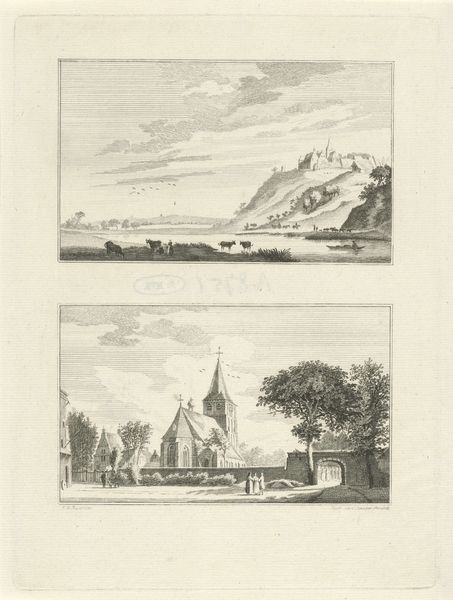
drawing, print, paper, engraving
#
drawing
#
dutch-golden-age
#
ink paper printed
# print
#
landscape
#
paper
#
cityscape
#
engraving
Dimensions: height 169 mm, width 109 mm
Copyright: Rijks Museum: Open Domain
Hendrik Spilman made this print of the House at Druten and Puiflijk. He used the technique of etching, where a metal plate is coated with wax, the design is scratched into the wax, and then acid is applied to bite into the exposed metal. This labor-intensive process allowed artists like Spilman to create multiple copies of their work, making art more accessible to a wider audience. Here, the fine lines and delicate shading capture the architectural details of the buildings and the surrounding landscape. The technique lends itself to detailed topographical studies, reflecting the artist's skill and the demands of the market for such views. Prints like these were part of a growing commercial network, relying on skilled artisans and systems of distribution. Understanding the processes behind this print helps us appreciate the intersection of art, labor, and commerce in the 18th century, blurring the lines between craft and fine art.
Comments
No comments
Be the first to comment and join the conversation on the ultimate creative platform.

